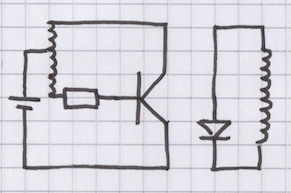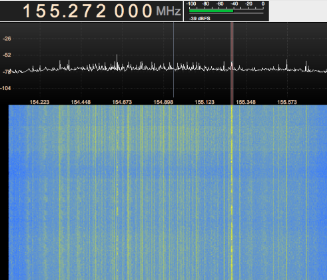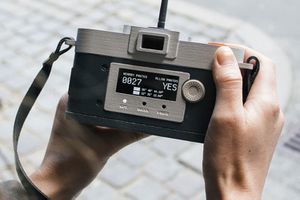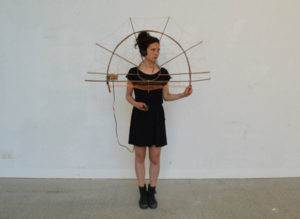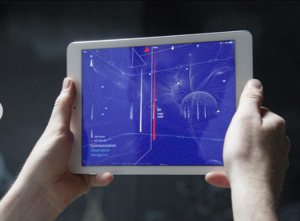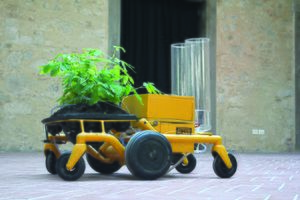Difference between revisions of "User:Sanneschilder/Unravel the Code V"
m (moved Unravel the Code V to User:Sanneschilder/Unravel the Code V: subpagina!!) |
|||
| Line 37: | Line 37: | ||
| − | + | This ipad app from Richard Vijgen lets you see radio signals. The world around us is completely surrounded by invisible waves. If you could see it, everything around us would ripple with information. "As an information designer, I'm interested in visualizing things we cannot see," says Vijgen. The project is evealing the invisible technological landscape. In a very nice way, like a blueprint. | |
| − | + | ''The Architecture of Radio is a data visualization, based on global open datasets of cell tower, Wi-Fi and satellite locations. Based on your GPS location the app shows a 360 degree visualization of signals around you. The dataset includes almost 7 million cell towers, 19 million Wi-Fi routers and hundreds of satellites. "As technology is becoming more and more transparent, I think data visualization can help us to relate to things that are invisible, yet play an important role in our lives." | |
| − | + | '' | |
| − | |||
| − | |||
| − | |||
| − | |||
| − | |||
| − | |||
| − | |||
Revision as of 10:17, 28 September 2016
Contents
Workshops
Workshop: Analog Sensing Devices
Quote: "ben je gewoon de lul"
Workshop: Time is relative, but centrally managed
Research
Camera Restricta is a speculative design of a new kind of camera. It locates itself via GPS and searches online for photos that have been geotagged nearby. If the camera decides that too many photos have been taken at your location, it retracts the shutter and blocks the viewfinder. You can't take any more pictures here. Nowadays digital photography causes a infinite stream of imagery. Camera Restricta could be a controversial tech product, promising unique pictures by preventing the user from contributing to the overflow of generic digital imagery. It is a interesting Thought, where i can relate too as a photographer.
Magnetoceptia, is a serie of antenna-based costumes for performance and installation together with Patrizia Ruthensteiner. The self made antenna picks up electromagnetic fields and translate them into electronic sounds. For the antennas she uses branches, bamboo, apples etc. combined with open electronics. The copper wire is wound into different patterns into the constume, the project an investigation on different properties of natural and technological materials. What I really like about this project is here choice voor design. But also here research (Magnetoceptia) is very nice.
This ipad app from Richard Vijgen lets you see radio signals. The world around us is completely surrounded by invisible waves. If you could see it, everything around us would ripple with information. "As an information designer, I'm interested in visualizing things we cannot see," says Vijgen. The project is evealing the invisible technological landscape. In a very nice way, like a blueprint.
The Architecture of Radio is a data visualization, based on global open datasets of cell tower, Wi-Fi and satellite locations. Based on your GPS location the app shows a 360 degree visualization of signals around you. The dataset includes almost 7 million cell towers, 19 million Wi-Fi routers and hundreds of satellites. "As technology is becoming more and more transparent, I think data visualization can help us to relate to things that are invisible, yet play an important role in our lives."
The project I did at the practice Hacking relateds to the subject of this semester. The assignment was to discover the hidden electromagnetic spectrum. The focus was on how to get the electrical activity inside of plants as a main source of data. That gives a insight into processes happening inside the plant and see its reaction to its environment. We have tried to capture this signals with a Arduino and made a visualization in processing. Ivan Henriques is a artist who is researching the balance between nature and technology – He believes nature is a very important factor for the development of our technological world. Jurema Action Plant is an interactive bio-machine. Like machines and animals, the plants have an electrical signal traveling inside them. If you touch te plant, the machine will move away from you. It is too explore new ways of communication and co-relation between humans, living organism and a machine. What I like about the research and project from Henriques is that he takes nature as an inspiration. nature and technology sounds like two extreme and combined them into one piece creates a interesting friction. electric signals is a natural phenomenon but because you can not perceive, it feels like fiction. The part that makes it interesting for me as a imagemaker is too visualizes this signals/waves.

